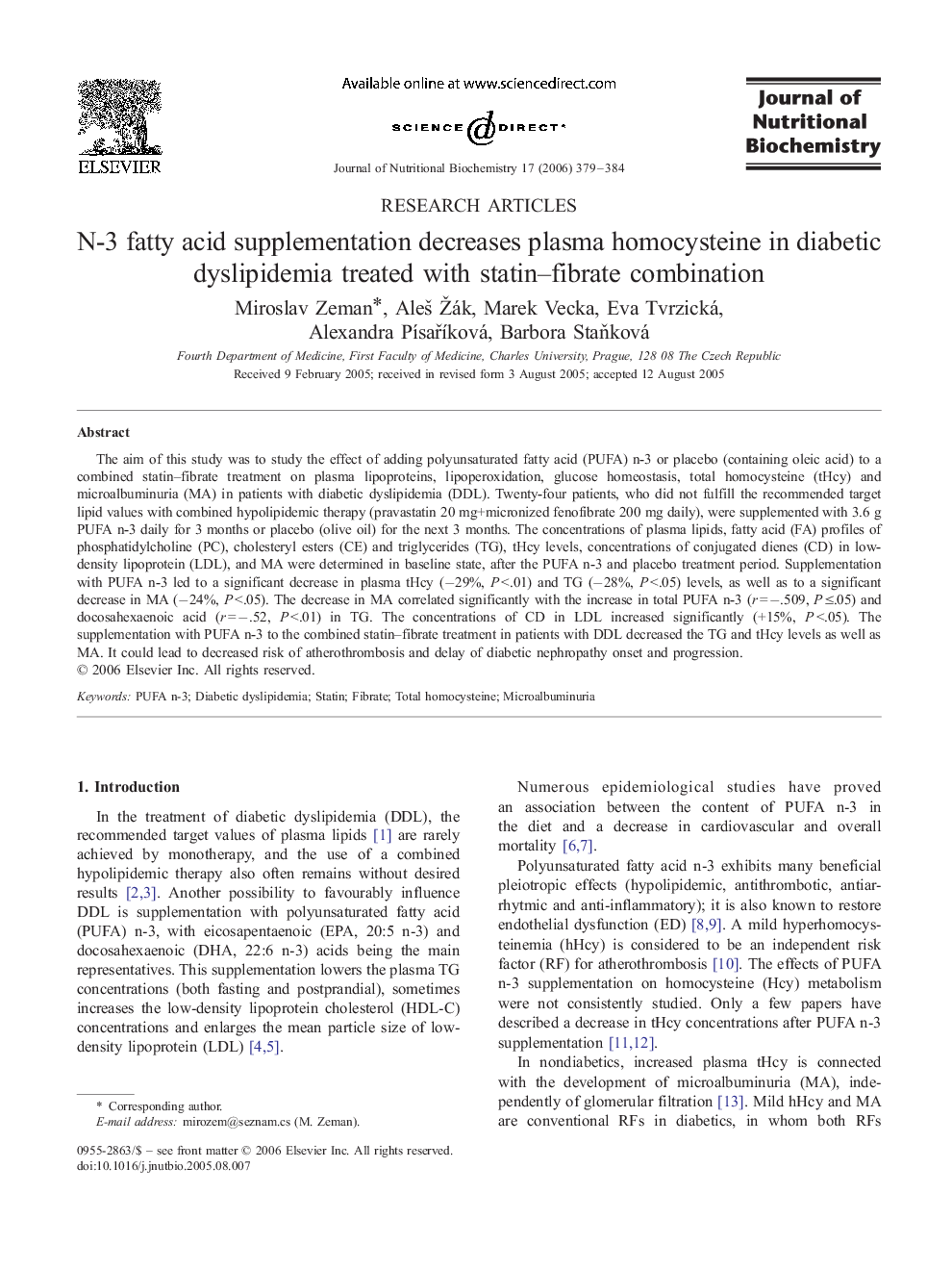| Article ID | Journal | Published Year | Pages | File Type |
|---|---|---|---|---|
| 1991135 | The Journal of Nutritional Biochemistry | 2006 | 6 Pages |
The aim of this study was to study the effect of adding polyunsaturated fatty acid (PUFA) n-3 or placebo (containing oleic acid) to a combined statin–fibrate treatment on plasma lipoproteins, lipoperoxidation, glucose homeostasis, total homocysteine (tHcy) and microalbuminuria (MA) in patients with diabetic dyslipidemia (DDL). Twenty-four patients, who did not fulfill the recommended target lipid values with combined hypolipidemic therapy (pravastatin 20 mg+micronized fenofibrate 200 mg daily), were supplemented with 3.6 g PUFA n-3 daily for 3 months or placebo (olive oil) for the next 3 months. The concentrations of plasma lipids, fatty acid (FA) profiles of phosphatidylcholine (PC), cholesteryl esters (CE) and triglycerides (TG), tHcy levels, concentrations of conjugated dienes (CD) in low-density lipoprotein (LDL), and MA were determined in baseline state, after the PUFA n-3 and placebo treatment period. Supplementation with PUFA n-3 led to a significant decrease in plasma tHcy (−29%, P<.01) and TG (−28%, P<.05) levels, as well as to a significant decrease in MA (−24%, P<.05). The decrease in MA correlated significantly with the increase in total PUFA n-3 (r=−.509, P≤.05) and docosahexaenoic acid (r=−.52, P<.01) in TG. The concentrations of CD in LDL increased significantly (+15%, P<.05). The supplementation with PUFA n-3 to the combined statin–fibrate treatment in patients with DDL decreased the TG and tHcy levels as well as MA. It could lead to decreased risk of atherothrombosis and delay of diabetic nephropathy onset and progression.
